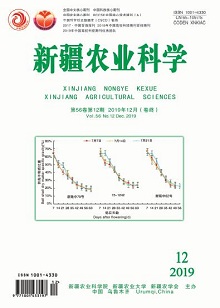|
|
Study on Seed Content and Fertility of Different Jujube Varieties
GAO Qiu-ling, WANG Zhen-lei, LIN Min-juan, WANG Jian-yu
2019, 56(12):
2275-2281.
DOI: 10.6048/j.issn.1001-4330.2019.12.013
【Objective】 The seed content of jujube is one of the factors that affect the process of hybrid breeding. This project aims to select suitable female parent and speed up the process of hybrid breeding of jujube. 【Method】 From 2016 to 2018, 41 jujube cultivars were used as test materials to study the variation rules of kernel contents of the seeds, shrunken kernel rate, fertility and double kernel content, and also, the kernel contents of eight jujube varieties were compared with those of the original places and of Shandong Provinc. 【Result】 The results showed that among the jujube varieties, there were great differences in kernel content, shriveled kernel rate, fertility rate and double kernel rate. The kernel contents of the seeds was 0-143.33%, shrunken kernel rate was 0-60%, fertility was 0-140%, and double kernel rate was 0-43.33%. The coefficient of variation of fertility in 2016 was larger than that in 2017 and 2018; Through correlation analysis, we saw that the higher the kernel content, the higher the fertility rate and the double kernel rate. Compared with Shandong area, the kernel content of 8 jujube varieties in this area was 1.11%-56.42% higher than that in Shandong area. Cluster analysis showed that 19 varieties of Beibeixaiozao, Fengmiguan, Fucuimi, Gedacui, Hetaowen, Hengyangzhenzhu, Hongdayihao, Lejinsihao, Linxianshuituanzao, Luzaoshihao, Luzaoyihao, Luzaosihao, Luzaowuhao, Luzaojiuhao, Lucuizao, Rucuimi, Xiangzao, Yashi, Yuanlingerhao had high kernel content, high fertility rate and low shriveled kernel rate, which were suitable for selection as hybrid female parent. 【Conclusion】 The kernel content of jujube varieties varies greatly, and at the same time, different producing areas and year also have certain influence on the kernel content of jujube varieties. In the process of hybrid breeding, the varieties with high yield, high fertility and low shrunken kernel rate could be selected as the hybrid female parent according to the breeding objective.
|

